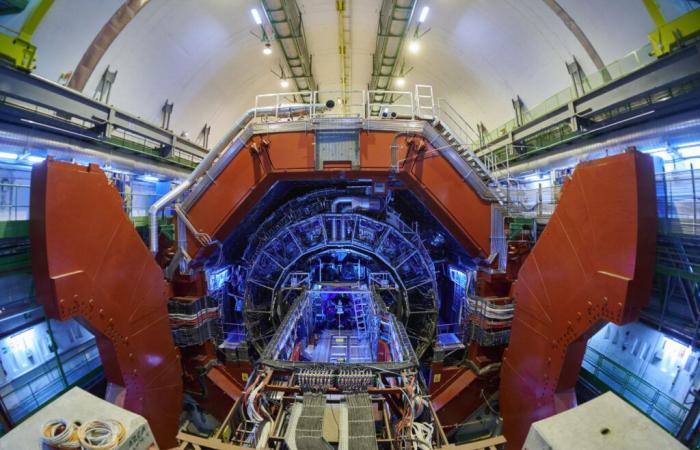Transforming lead, a base metal, in gold, a precious metal, was the dream of medieval alchemists. This old search, known as crispera it could have been motivated by the observation that lead, opaque gray and relatively abundant, has a density similar to that of gold, a long time coveted by its beautiful color and rarity. It was much later when it became evident that lead and gold are different chemical elements and that chemical methods are unable to transmute them.
Now, in an article published in Physical Review Journals, the Alice collaboration reports on measurements that quantify the transmutation of gold to gold in the great Hadron collision (LHC) of CERN.
With the dawn of nuclear physics in the twentieth century, it was discovered that heavy elements could transform into others, either naturally, by means of radioactive disintegration, or in the laboratory, through a bombardment of neutrons or protons. Although gold had already occurred artificially in this way, the Alice collaboration has now measured the transmission of gold to gold through a new mechanism that implies almost accidental collisions between lead nuclei in the LHC.
Collisions in particle accelerator
The collisions of very high energy between lead nuclei in the LHC can create plasma of quarks and gluones, a state of hot and dense matter that is believed to fill the universe approximately one millionth of second after the Big Bang, giving rise to the matter we know today. However, in the much more frequent interactions, where the nuclei touch without touching, the intense electromagnetic fields that surround them can induce interactions photon-foton and photon-nucleus that open new exploration channels.
The electromagnetic field that emanates from a lead core is particularly intense because it contains 82 protons, each with an elementary load. In addition, the very high speed at which the lead nuclei in the LHC (corresponding to 99,99993 % of the light of the light) travels makes the lines of the electromagnetic field compress in a thin layer, transverse to the direction of the movement, which produces a pulse of short -term photons.
Often, this triggers a process called electromagnetic dissociation, through which a photon that interacts with a nucleus can cause oscillations in its internal structure, resulting in the expulsion of small amounts of neutrons and protons. To create gold (a core with 79 protons), three protons must be extracted from a lead core in the LHC beams.
-“It is impressive to see that our detectors can handle frontal collisions that produce thousands of particles, and at the same time they are sensitive to collisions in which only a few particles are produced at the same time, which allows the study of the ‘electromagnetic nuclear transmutation processes,” says Marco Van Leeuwen, Alice spokesman.
Zero grade calorimeters
The Alice team used the zero grade calorimeters (ZDC) of the detector to account for the number of photon-nucleus interactions that resulted in the emission of zero, one, two and three protons accompanied by at least one neutron, which are associated with the production of lead, talium, mercury and gold, respectively. While it is less frequent than the creation of Talio or Mercury, the results show that the LHC currently produces gold at a maximum speed of approximately 89,000 cores per second from lead-block collisions at the Alice collision point.
The golden nuclei emerge from the collision with very high energy and affect the LHC beam or the collimators in various points downstream, where they immediately fragment in protons, neutrons and other individual particles. Gold exists during just a small fraction of a second.
Alice’s analysis shows that, during the second execution of the LHC (2015-2018), around 86 billion golden centers were created in the four main experiments. In terms of mass, this corresponds to only 29 peaks (2.9 × 10⁻⁴ g). Since the luminosity of the LHC increases continuously thanks to the periodic updates of the machines, the third execution has produced almost double gold as the second, but the total remains billion times less than that necessary to manufacture a piece of jewelry. While the dream of medieval alchemists has come true, their hopes of wealth have been frustrated once again.
“Thanks to the unique capabilities of the Alice ZDC, the present analysis is the first to systematically detect and analyze the signing of gold production in the LHC experimentally,” says Uliana Dmitrieva of the Alice collaboration.
“The results also prove and improve the theoretical models of electromagnetic dissociation that, beyond their intrinsic physical interest, are used to understand and predict the losses of beam that are an important limit in the performance of the LHC and future collider,” adds John Jowett, also of the Alice collaboration.






